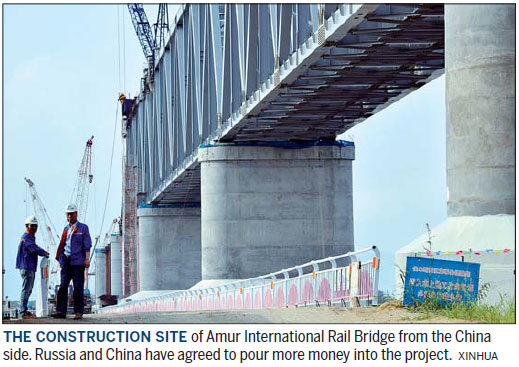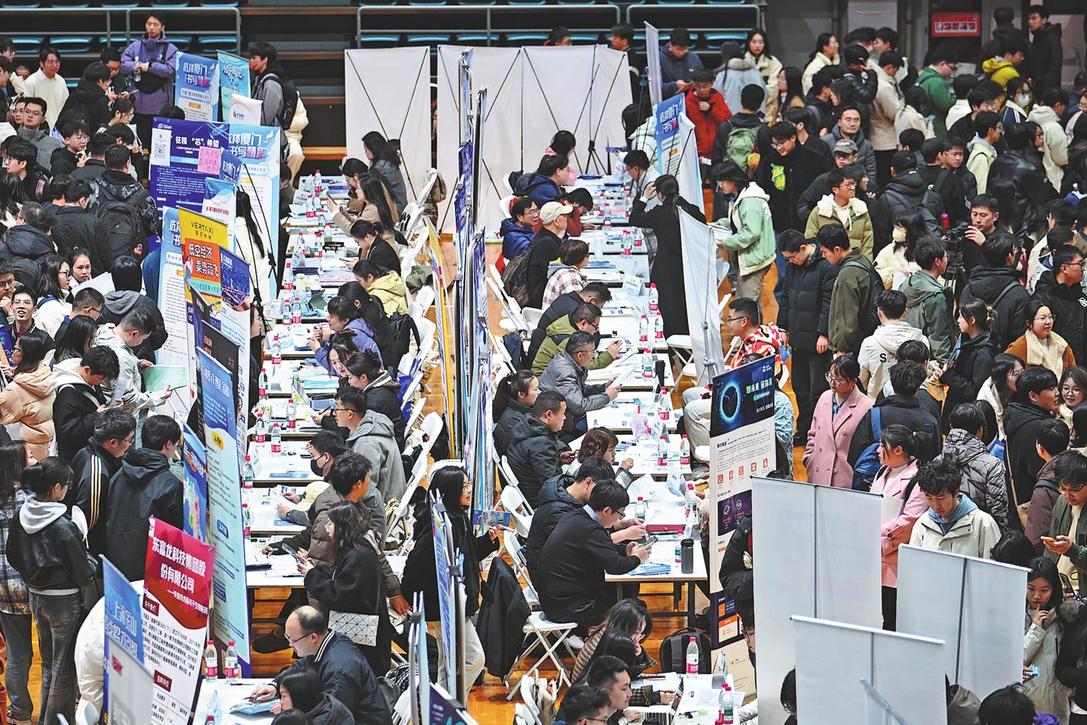Bridge to shared prosperity

Russia's ideal location between China and Europe means it's ideally suited to improve connectivity between continents
Russia and China have achieved positive results through cooperation on infrastructure construction - including such projects as the Amur International Rail Bridge - and Russian investors are expecting more opportunities under the cooperative framework, according to Kirill Dmitriev, CEO of the Russian Direct Investment Fund.
The fund is a $10 billion (9.4 billion euros; 8 billion) pool established by the Russian government in June 2011 to make equity investments in high-growth sectors of the Russian economy.
Both the Russian and Chinese governments are pushing coordination of the Eurasian Economic Union with China's Belt and Road Initiative. Dmitriev says the support from leaders stimulates business development by minimizing additional risk and reducing red tape around Sino-Russian economic cooperation.

"If our leaders continue to inspire and promote this cooperation, governments and companies will follow suit," Dmitriev says. "However, to achieve this we need specially designed vehicles, such as the Russia-China Investment Fund and the Russia-China Intergovernmental Investment Cooperation Commission and the Russia-China Business Advisory Committee, to be successful in converting the positive and proactive attitudes of our leaders into real and trangible mutual benefit for both the Russian and Chinese economies."
The Russian fund, together with China Investment Corporation, established the Russia-China Investment Fund, or RCIF, in 2012, which received $2 billion in commitments from the Russian Direct Investment Fund and China Investment Corp.
Dmitriev says the RCIF has identified five key focus areas in which lie considerable potential for generating returns that include natural resources, infrastructure, food and agriculture, and consumer goods and services.
"We target opportunities created by the rapid development of economic cooperation, fast-growing trade and the increasing purchasing power of the middle class in Russia and China," Dmitriev says. "The approach allows the fund to generate attractive returns for investors."
He adds that RCIF projects in China include investments in Didi Dache, Tutor Group and the Russian-China Bridge across the Amur River.
Just recently, RCIF and Tus-Holdings, an integrated enterprise that owns Tsinghua University Science Park, agreed to establish a joint Russia-China Venture Fund. The fund will promote the development of trade and economic investment, as well as scientific and technological cooperation between Russia and China.
"The fund target size will be up to $100 million and may be further increased," he says. "The RCIF and Tus-Holdings will be anchor investors. There will likely also be participation from other Russian and Chinese institutional investors."
"The One Belt, One Road Initiative is very important for Russia, because it has the potential to provide sources of additional economic growth," Dmitriev says. "Russia's strategic location between China and Europe means we are ideally situated to support this initiative and improve the connectivity between East and West."
At present, the Russian Direct Investment Fund is actively looking for more Belt and Road-related investment opportunities and has signed a partnership agreement with the Silk Road Fund of China, a state-owned investment fund of the Chinese government, to foster increased investment in countries along the Belt and Road route and is actively pursuing related investment opportunities.
Dmitriev says the railroad bridge across the Amur may serve as and example of a potential Belt and Road connection with the EEU. The bridge - called the Amur International Rail Bridge or the China-Russian Tongjiang Rail Bridge - links Nizhneleninskoye with Tongjiang.
Dmitriev says the bridge will be greatly beneficial to both countries as it creates a new export corridor and alleviates transport infrastructure constraints between new fields being developed in Eastern Siberia and the Far East. It will also allow for a significant increase in the turnover of goods and the competitiveness of Russian exporters and producers when entering Chinese markets.
renqi@chinadaily.com.cn
(China Daily Africa Weekly 12/02/2016 page30)
Today's Top News
- Xi stresses importance of raising minors' moral standards
- Coordinated reform key to country's growth
- Shandong gives new life to traditions
- China rebukes UK for 'interfering' in Hong Kong case
- Hainan FTP launches intl services portal
- HK's Jimmy Lai convicted in national security case






























